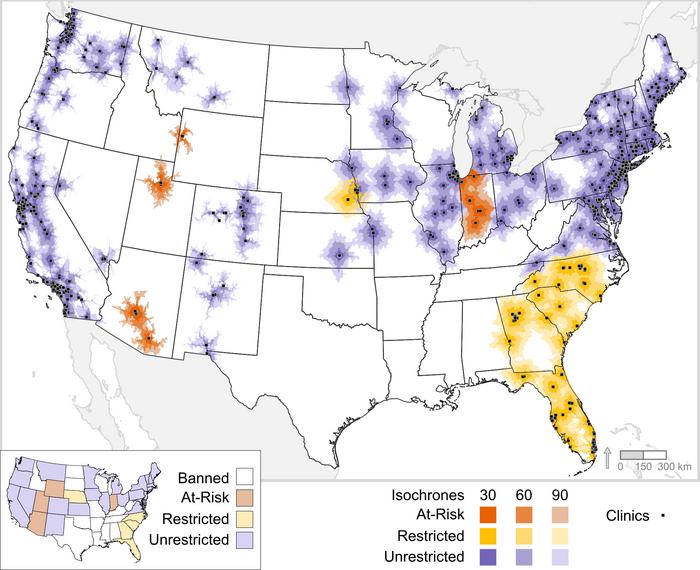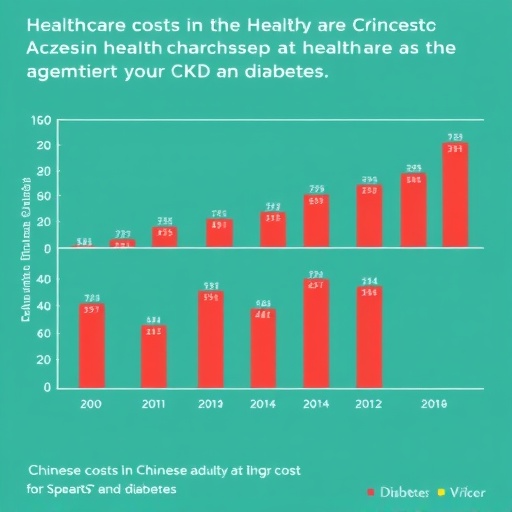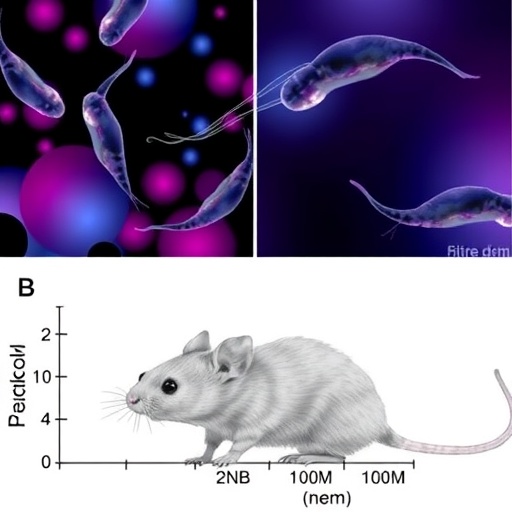SPOKANE, Wash. – One year after the Dobbs decision, 41.8% of U.S. women of reproductive age have to drive 30 minutes or more to reach an abortion care facility, according to a study of data as of June 2, 2023. Researchers predicted that number would rise to 53.5% if other state bills under consideration are passed.

Credit: Source: A Geospatial Analysis of Abortion Access in the United States after the Reversal of Roe v Wade, Obstetrics & Gynecology: July 26, 2023
SPOKANE, Wash. – One year after the Dobbs decision, 41.8% of U.S. women of reproductive age have to drive 30 minutes or more to reach an abortion care facility, according to a study of data as of June 2, 2023. Researchers predicted that number would rise to 53.5% if other state bills under consideration are passed.
The study estimated longer drives as well, finding that 29.3% of women didn’t have access to a facility within a 60-minute drive and 23.6% lacked access even within a 90-minute drive. Those figures would jump to 45.6% and 43% respectively if new restrictions are passed.
While the 2022 Dobbs decision overturning Roe v. Wade created a patchwork of abortion restrictions across the nation, the researchers found state laws did not necessarily determine the procedure’s availability.
“This study highlights that abortion access is about more than laws. It’s about more than the state you reside in because people are allowed to cross state borders for medical care. There are a lot of other factors at play,” said Dr. Dawn Kopp, the vice chair for OBGYN at Washington State University Elson S. Floyd College of Medicine and senior author on the study in the journal Obstetrics and Gynecology.
For example, Kopp pointed out that in Wisconsin, a state that bans abortion, 61.7% of women still had access within a 90-minute drive to facilities that provide abortions in neighboring states. Conversely, some states where abortion is legal may still not have good access for lack of facilities and the location of facilities relative to where people reside.
For this study, the researchers compared census data for women ages 15-49 to locations of 750 abortion care facilities. The authors note that data limits on gender and age-ranges may not capture all people capable of pregnancy, but it does focus on a large proportion of those affected. The facilities were gathered from lists publicly available online with the intention to mimic what an average person might use if they searched for a provider.
Working with the DataLab at the University of California, Davis, the researchers then used “isochrones,” map lines that create travel time areas using actual roads.
“Use of geospatial technology and analysis in the field of medicine is a growing area of interest,” said co-author Michele Tobias, a geospatial data specialist at the UC Davis DataLab.
While other studies have estimated distances to care, this research focused on the real drives women would have to make.
“You hear these broad strokes of certain states banning or restricting abortion, but we were able to see on such a granular level the impact this is having on the lives of everyday American women,” said first author Maeve Alterio, a fourth-year medical student at WSU.
The lack of access has potential serious health consequences as other research has found an increase in maternal and neonatal mortality in states with more abortion restrictions.
These risks have a greater effect on people with lower incomes, the authors said, since the cost of travel and time off work can put the abortion out of reach for people in places like Texas and states without providers in neighboring areas.
Telehealth likely provides access that spans borders for some patients, as many early pregnancy abortions are now done through medication taken at home rather than through a procedure in a clinic. The researchers counted these but could not estimate their geographical reach. They also noted the barriers to telehealth including finding follow-up care in areas where abortion is illegal. Many states have also enacted legislation to ban or restrict telehealth use for abortion.
The volatile legal landscape around abortion means the researchers had to re-analyze the data three times as more bills passed or were challenged in court.
Navigating these shifts in the legal landscape has added complexity and uncertainty to the lives of American families, Kopp said.
“This study adds to the stories patients and clinicians have already shared by giving objective data on how pervasive the difficulty to access comprehensive reproductive health care is in a post Roe v. Wade America,” she said.
Journal
Obstetrics and Gynecology
DOI
10.1097/AOG.0000000000005329
Article Title
A Geospatial Analysis of Abortion Access in the United States after the Reversal of Roe v Wade
Article Publication Date
26-Jul-2023




